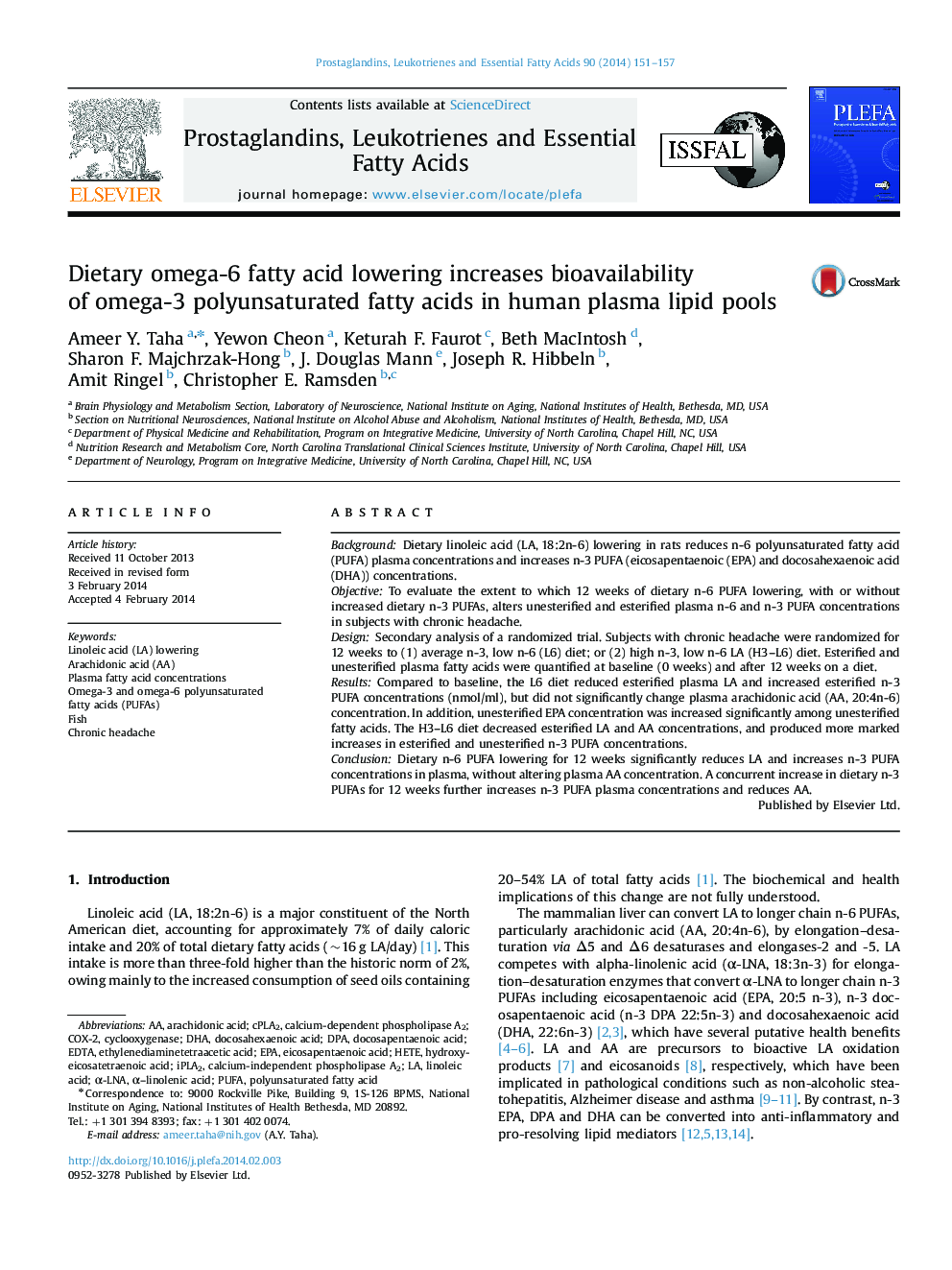| کد مقاله | کد نشریه | سال انتشار | مقاله انگلیسی | نسخه تمام متن |
|---|---|---|---|---|
| 2777600 | 1152741 | 2014 | 7 صفحه PDF | دانلود رایگان |
BackgroundDietary linoleic acid (LA, 18:2n-6) lowering in rats reduces n-6 polyunsaturated fatty acid (PUFA) plasma concentrations and increases n-3 PUFA (eicosapentaenoic (EPA) and docosahexaenoic acid (DHA)) concentrations.ObjectiveTo evaluate the extent to which 12 weeks of dietary n-6 PUFA lowering, with or without increased dietary n-3 PUFAs, alters unesterified and esterified plasma n-6 and n-3 PUFA concentrations in subjects with chronic headache.DesignSecondary analysis of a randomized trial. Subjects with chronic headache were randomized for 12 weeks to (1) average n-3, low n-6 (L6) diet; or (2) high n-3, low n-6 LA (H3–L6) diet. Esterified and unesterified plasma fatty acids were quantified at baseline (0 weeks) and after 12 weeks on a diet.ResultsCompared to baseline, the L6 diet reduced esterified plasma LA and increased esterified n-3 PUFA concentrations (nmol/ml), but did not significantly change plasma arachidonic acid (AA, 20:4n-6) concentration. In addition, unesterified EPA concentration was increased significantly among unesterified fatty acids. The H3–L6 diet decreased esterified LA and AA concentrations, and produced more marked increases in esterified and unesterified n-3 PUFA concentrations.ConclusionDietary n-6 PUFA lowering for 12 weeks significantly reduces LA and increases n-3 PUFA concentrations in plasma, without altering plasma AA concentration. A concurrent increase in dietary n-3 PUFAs for 12 weeks further increases n-3 PUFA plasma concentrations and reduces AA.
Journal: Prostaglandins, Leukotrienes and Essential Fatty Acids (PLEFA) - Volume 90, Issue 5, May 2014, Pages 151–157
